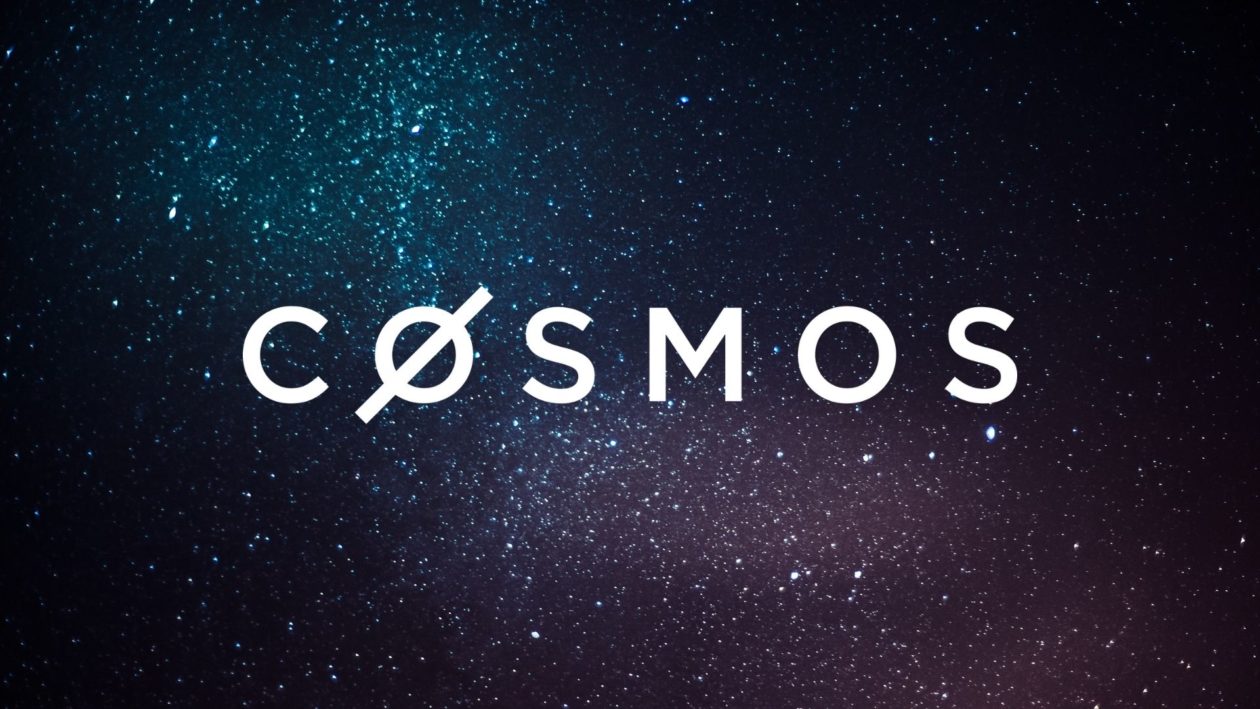The Cosmos ecosystem has seen rapid growth in recent months since the launch of Cosmos Hub — the first blockchain in the Cosmos ecosystem — in 2019.
Over 20 blockchains, including Cosmos Hub, Osmosis, Crypto.Org and Terra, are now connected in the Cosmos ecosystem by the Inter-Blockchain Communication (IBC) protocol that allows independent blockchains to talk to each other and transfer data and assets. Over 1.6 million IBC transfers took place across the blockchains in the last 30-days, according to Map of Zones data.
The Cosmos ecosystem currently secures over US$178.4 billion in digital assets including Binance Coin (BNB), Crypto.com Coin (CRO), Terra (LUNA) and Cosmos Hub (ATOM) — making it the second-largest blockchain ecosystem after Ethereum in terms of value, according to Cosmos. Ethereum, Binance, Solana and Avalanche currently have US$181 billion, US$19.5 billion, US$14.6 billion and US$13.7 billion respectively in total value locked, according to DeFi Llama.
Although Ethereum is currently the most widely used smart contract platform, its popularity has led to scalability issues, and competitors such as Solana, Cardano and Avalanche blockchains have emerged to challenge Ethereum’s dominance. Aside from its large size, the Cosmos ecosystem is unique in how it enables independent blockchains in the network to communicate with each other.
This Forkast.News explainer will explore:
- What is Cosmos?
- Cosmos’ roots
- The vision behind Cosmos
- Cosmos’ core features
- Cosmos’ native token — $ATOM
- Key projects on Cosmos
- What does the future hold for Cosmos?
1. What is Cosmos?
Cosmos, which bills itself as the internet of blockchains, is a decentralized network of independent yet interoperable blockchains that are able to exchange information and tokens between each other permissionlessly.
Cosmos aims to address some of the issues faced by other blockchains — such as scalability, usability and governance — by providing the tools to help developers quickly build independent blockchains for a variety of use cases and enabling blockchains in the network to communicate with each other.
The independent blockchains, called “zones” in the Cosmos ecosystem, are powered by the Tendermint proof-of-stake byzantine fault tolerant (BFT) consensus algorithm. A byzantine fault tolerant consensus algorithm allows the network to reach consensus even if some of the nodes fail or act maliciously. The first blockchain on the Cosmos network is the Cosmos Hub and ATOM is the native token of Cosmos Hub.
2. Cosmos’ roots
Before Cosmos was even an idea, blockchain software architect Jae Kwon founded Tendermint (also known as All in Bits Inc.) in 2014 and created Tendermint Core, a blockchain engine that creates proof-of-stake (PoS) consensus algorithms. The following year, Kwon, together with Ethan Buchman, went on to refine the Tendermint consensus algorithm that now powers Cosmos, and the two Tendermint co-founders published the Cosmos white paper, “A Network of Distributed Ledgers,” in 2016.
The Interchain Foundation (ICF), a Swiss non-profit formed to support the development of the Cosmos Network, conducted an initial coin offering (ICO) of the ATOM token in 2017, raising US$16.8 million in 30 minutes — a highly successful blockchain-based fundraising event at the time. The ICF’s funding program is mainly managed by two entities — Interchain GmbH, a wholly-owned subsidiary of the Interchain Foundation, and Informal Systems, a spin-off of the ICF research and development team, with Tendermint co-founder Buchman as its CEO.
The Interchain Foundation has contracted with software development company Tendermint to develop the Cosmos Network and build its infrastructure. Tendermint, one of the core contributors building out the Cosmos ecosystem, raised US$9 million in a Series A funding round in 2019 for the development of the project.
Peng Zhong, CEO at Tendermint and the first employee at Tendermint in 2015, told Forkast.News in a recent interview that Tendermint Inc had initially intended to go the way of enterprise blockchain and sell the Tendermint consensus technology to large corporations. But it subsequently decided to focus on building out the Cosmos network to create as many sovereign blockchains as possible and allowing people to control their own network with on-chain governance, but at the same time, be able to transfer assets between each other.
“There is a lot of potential in blockchain to reshape collaboration and connectivity and decision making across the world, and we’ve seen a lot of examples of this with the chains that are IBC enabled right now, Zhong said. “We see a future where there will be hundreds, thousands, tens of thousands and a million blockchains further in the future, and that’s what we’re building towards.”
3. The Vision of Cosmos
Just as Ethereum aspires to be the world’s computer, Cosmos’ goal is to be an “internet of blockchains” and aims to make it easy for developers to build blockchains for different use cases or applications, and for blockchains to communicate and transact with each other.
4. Cosmos’ core features
Blockchains such as Bitcoin traditionally exist as if in silos and are unable to communicate or interact with each other. Older blockchains also tend to be difficult to build on and can handle only a few transactions per second.
Cosmos enables independent blockchains to exchange information and tokens with each other permissionlessly. Its vision of being a network of blockchains is achieved through open source tools such as the Tendermint consensus engine and a BFT consensus algorithm, Cosmos software development kit (SDK), and the Inter-Blockchain Communication Protocol, like a TCP/IP for blockchains, allows blockchains to connect to each other to exchange data and value.
- Cosmos software development kit (SDK): The Cosmos SDK allows developers to easily build custom, scalable and interoperable blockchain applications on top of Tendermint.
- Ethermint, an Ethereum Virtual Machine implemented as a Cosmos SDK module, makes it possible for developers to deploy proof-of-stake blockchains that are compatible and interoperable with Ethereum. Developers would be able to leverage Ethereum tools to deploy smart contracts, while using Tendermint’s proof-of-stake functionality, and interact with the Cosmos ecosystem through IBC.
- Starport is an open source rapid prototyping tool that is a developer-friendly interface to build, launch and maintain a blockchain application.
- Inter-Blockchain Communication Protocol (IBC): IBC was launched in March on Cosmos Hub, and there are currently over 20 blockchains — and growing — built on the Cosmos SDK with IBC enabled including Osmosis, Cosmos Hub, Cronos and Terra. Over 1.6 million cross-chain transactions occurred between the IBC-enabled blockchains in the last 30 days, according to Map of Zones.
5. Cosmos Hub and its native token – $ATOM
Cosmos Hub — the first blockchain in the Cosmos ecosystem — launched on March 13, 2019. ATOM, the native token of Cosmos Hub, is used for transaction fees, staking and as a voting mechanism in governance. ATOM is currently ranked as the 27th largest cryptocurrency with a market cap of US$7.8 billion, according to CoinGecko. The price of ATOM reached an all-time high of US$44.42 on Sept. 20, 2021 and ATOM is trading at US$27.39 as of publishing time, according to CoinGecko.
6. Key projects on Cosmos
Cosmos is a decentralized ecosystem comprising many independent blockchains. There are over 260 applications and services built on Cosmos, according to the Cosmos website. Ethereum has over 2,800 decentralized applications (dApps), according to State of the DApps. However, as blockchains in Cosmos are independent blockchains, the Cosmos ecosystem could potentially have hundreds or thousands of Ethereums, each with their own dApps.
The Cosmos Hub was the first blockchain to launch on Cosmos. In July, the Gravity decentralized exchange (DEX) launched on Cosmos Hub, bringing cross-chain decentralized finance (DeFi) to the Cosmos ecosystem. Gravity DEX enables permissionless swaps and pools of digital assets between any two blockchains in the Cosmos ecosystem. Emeris, a DeFi portal, provides users with a consolidated view of their crypto holdings across the different Cosmos chains, facilitates cross-chain token transfers, swaps and participation in liquidity pools, and is intended to be the gateway for mainstream users to join the Cosmos ecosystem.
See related article: Gravity DEX brings DeFi into Cosmos network’s orbit
Other projects in the Cosmos ecosystem include Osmosis, a DEX that people can use to create liquidity and trade IBC-enabled tokens. Osmosis saw the largest number of IBC transactions on Cosmos, with over 720,000 transactions in the last 30 days, according to Map of Zones.
Terra, a blockchain for algorithmic stablecoins, is another project built on Cosmos SDK. The Terra ecosystem includes its native LUNA token, stablecoin USDTerra (UST), Anchor Protocol, Mirror Protocol and Pylons. In October, Terra enabled IBC, which allows Terra users to trade cross-chain with other IBC-enabled blockchains.
Cryptocurrency exchange and wallet provider Crypto.com also runs on the Cosmos network and is IBC-enabled.
Although DeFi has been the main driving force for Cosmos’ growth this year, work on NFTs has been gaining pace. On Nov. 16, NFTs pegged to famous traditional Chinese paintings by Rongbaozhai (Studio of Glorious Treasures) were transferred across four blockchains in both the permissioned China’s Blockchain-based Service Network (BSN) as well as public chains — WenChang Chain and IRITA Hub in BSN, and IRIS Hub (IRISnet) and Ethereum — for the first time via the Cosmos Terser IBC, a subset of the IBC protocol, according to a Cosmos blog update.
7. What does the future hold for Cosmos?
According to the Cosmos Hub roadmap 2.0, the Cosmos and Ethereum Gravity Bridge to transfer ATOM, Ether (ETH), ERC-20 and tokens on the Cosmos Hub between Ethereum- and Cosmos-compatible chains is part of the Cosmos Hub’s Theta upgrade expected to take place in the first quarter of 2022. The bridge to Ethereum and other Ethereum Virtual Machine (EVM)-compatible blockchains will bring more liquidity to Cosmos Hub. Also part of the upgrade will be a non-fungible token (NFT) module to enable the management of NFTs, liquid staking and interchain accounts to manage accounts across multiple blockchains.
Interchain security, which is a protocol to allow the Cosmos Hub validators to simultaneously validate another blockchain or multiple chains at the same time, is expected to come to Cosmos in the first half of 2022, according to a Cosmos Hub update in October. Interchain security will enable shared security and integration with IBC and allow Cosmos Hub stakers to earn rewards on multiple chains.
Future upgrades for Cosmos Hub in the works include non-IBC cross-chain bridges, decentralized identifiers (DID), virtual machines, and zero-knowledge and optimistic rollups, according to its roadmap.
“It’s a dizzying amount of complexity that’s beyond what Ethereum even has with a smart contract framework,” Zhong said. “Ethereum has smart contracts, there’s like tens of thousands of smart contracts, but in Cosmos, there can be tens of thousands of Ethereums and each one of those have tens of thousands of contracts.”
“[People] want to be able to use multiple protocols,” Zhong added, “and connect them all together in a way that would solve people’s problems.”





